Column What Are the Recommended Rehabilitation Methods For Spinal Canal Stenosis That You Can Do Yourself?
The condition in which the nerve passageway (spinal canal) in the spine becomes narrow is called spinal stenosis.
Stenosis occurs when the spinal canal becomes narrower due to age-related changes, or when the spinal canal becomes compressed due to spinal slippage or herniated discs. As early as around the age of 16, the lower back places the most stress on the body, and the discs begin to become damaged. As the intervertebral discs become damaged, their cushioning function decreases, putting strain on the bones, and the bones begin to deform. Eventually, the spinal canal, the space where the nerves reside, narrows and the nerves become compressed.
Block injections and surgical operations are sometimes used to treat spinal canal stenosis, but rehabilitation is also effective in alleviating symptoms such as pain.
This time we will talk about recommended rehabilitation that you can do yourself.
Recommended rehabilitation for spinal stenosis
Stretching for spinal stenosis has two purposes.
☑Reducing pressure on nerves due to stenosis
☑Relieve stiffness in the muscles of the lower back and lower legs
It is also important to train your muscles and back muscles to reduce the burden on your spine.
Knee Holding Stretch
This is a stretch that widens the nerve channels and loosens the muscles in your back.
1. Lie on your back and put both knees on your back
2. Bring your thighs closer to your stomach and hold for 15 seconds.
Breathe out as you bring your thighs together.
Repeat about 5 times.

Sitting on your knees stretch (Japanese Seiza Style Stretch)
It’s a little more difficult than the above knee stretch, but you can achieve the same effect.
1. Round your back while crawling on all fours
2. Gradually bend your knees without changing the position of your hands.
3. Be conscious of rounding your back and get into a sitting position.
Try not to hold your breath when sitting straight and try to relax.
4. Slowly return to the all fours position
Repeat about 5 times.
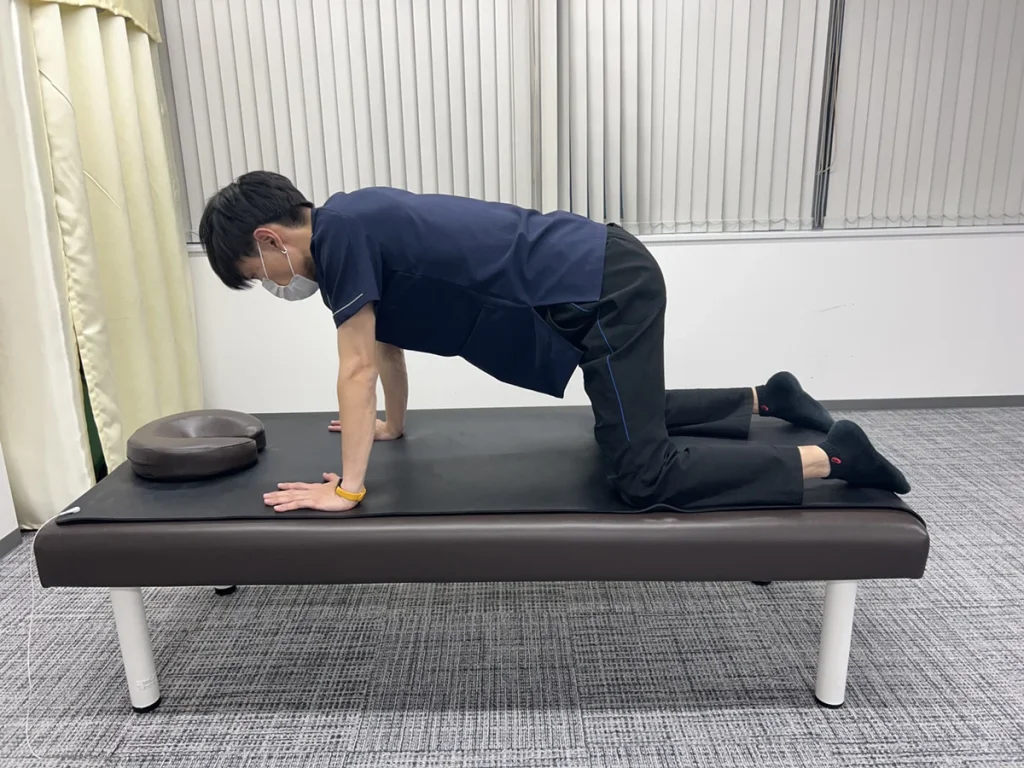
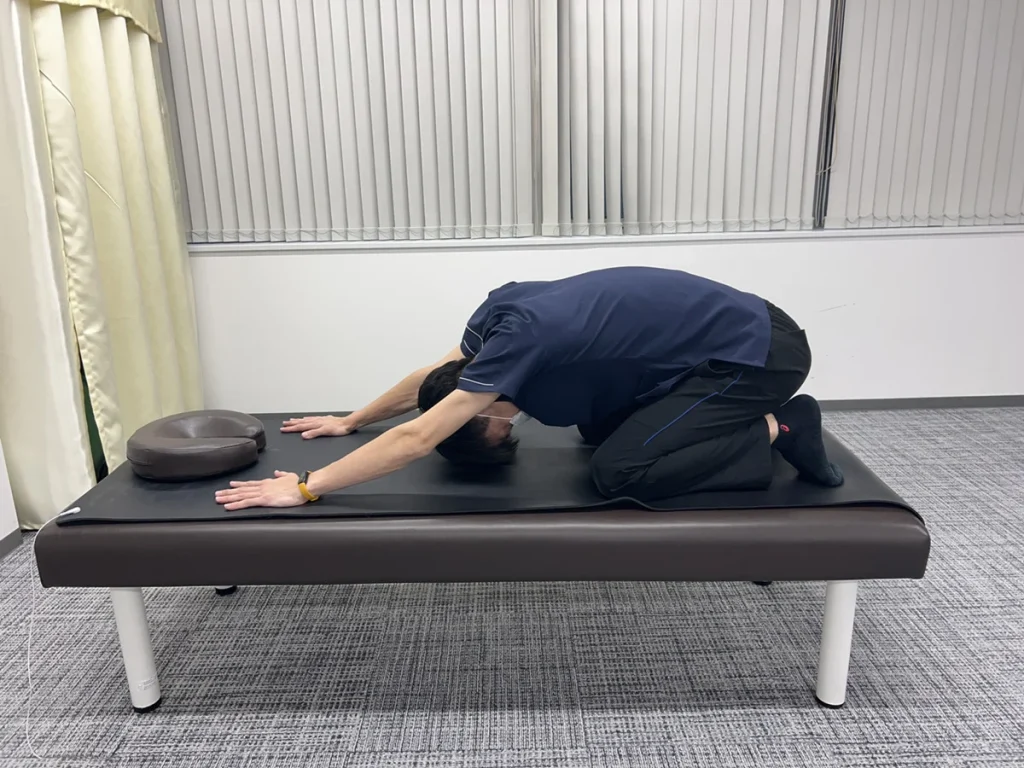
One knee stretch
When the iliopsoas muscle, which is the muscle at the front of the thigh, becomes stiff, it is easy to arch your lower back, so it is important to maintain flexibility.
1. Stand on one knee using a wall as support.
2. Pull the leg that is kneeling slightly back
3. Bend the knee of the front leg and stretch the front of the kneeling thigh.
Be careful not to arch your back or lean forward with your upper body.

“Drawing”
The transversus abdominis muscle, sometimes called a natural corset, is a muscle that supports the vertebrae.
If you have spinal stenosis, train your transversus abdominis muscles to control the load on your vertebrae.
1. Lie on your back and raise both knees
2. Take a deep breath in and out, similar to abdominal breathing.
3. When you exhale, let your stomach fall in.
When you exhale, purse your lips and exhale slowly and for a long time.
Repeat about 10 times.
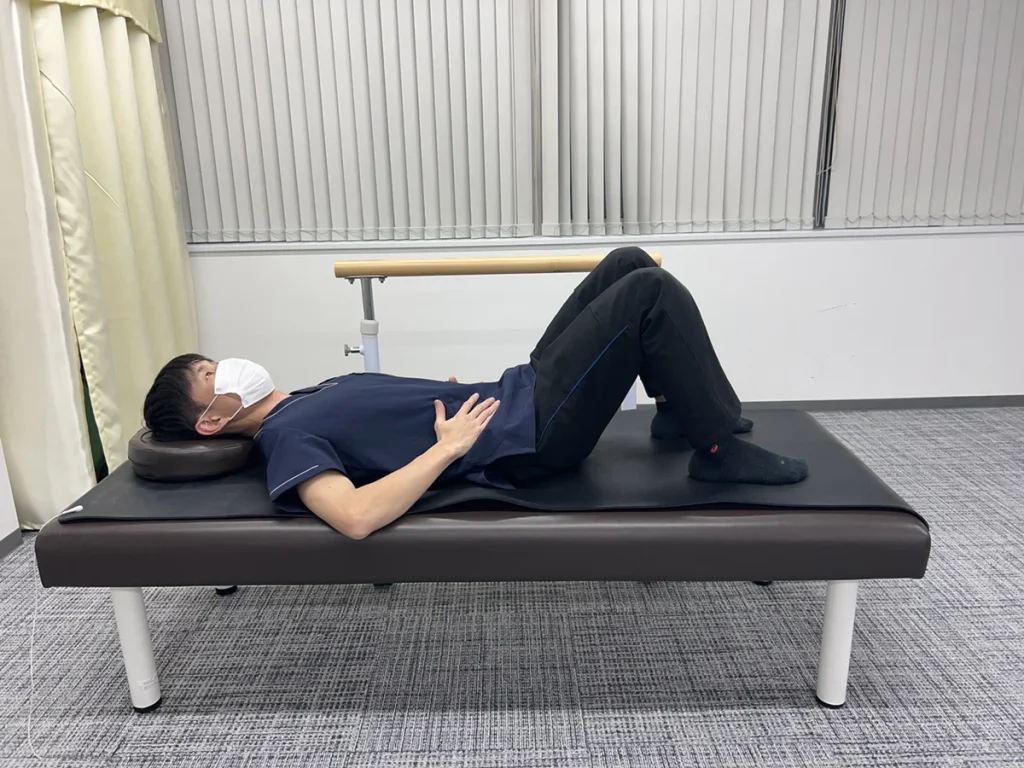
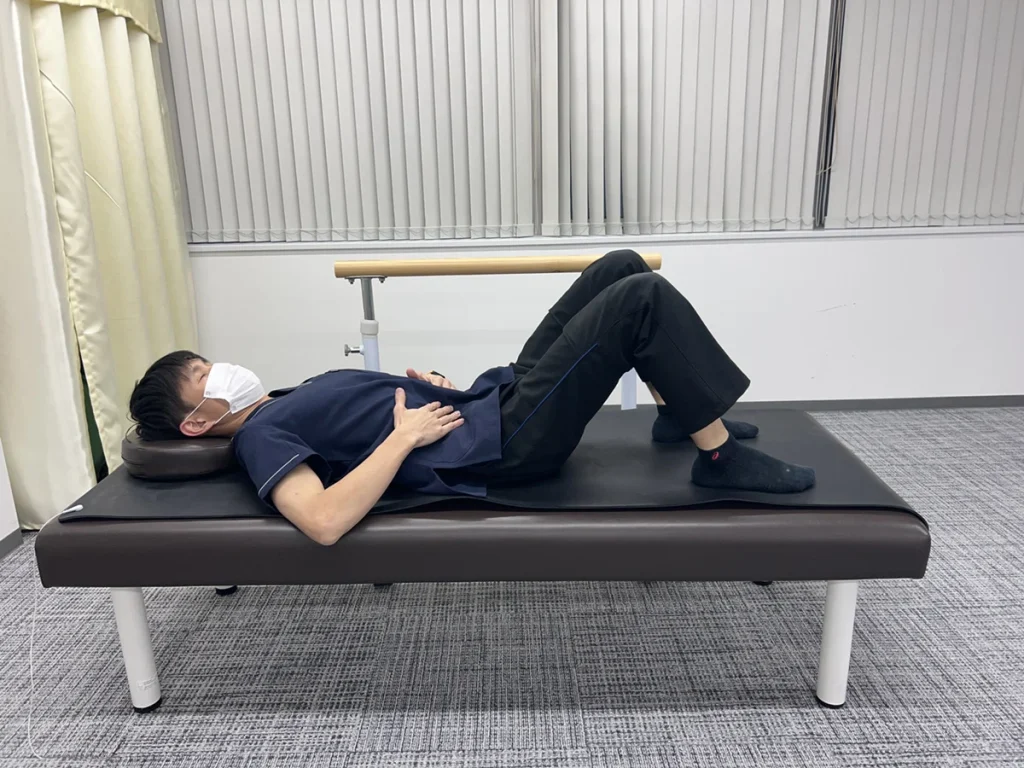
Inner muscle training
Among the abdominal muscles and back muscles, there is a muscle called the inner muscle. It plays a role in maintaining posture, supporting joints and internal organs, and supporting walking and exercise.
Here we will introduce exercises to train this inner muscle.
1. While crawling on all fours, avoid arching or arching your back.
2. Raise your right hand and left leg straight up and hold for 15 seconds.
3. Next, raise your left hand and right leg straight up and hold for 15 seconds.
Repeat about 10 times
Be careful not to tilt your body when you raise your arms and legs.
Also, by applying pressure to tuck your stomach in, you can effectively stimulate your muscles and prevent your lower back from arching.
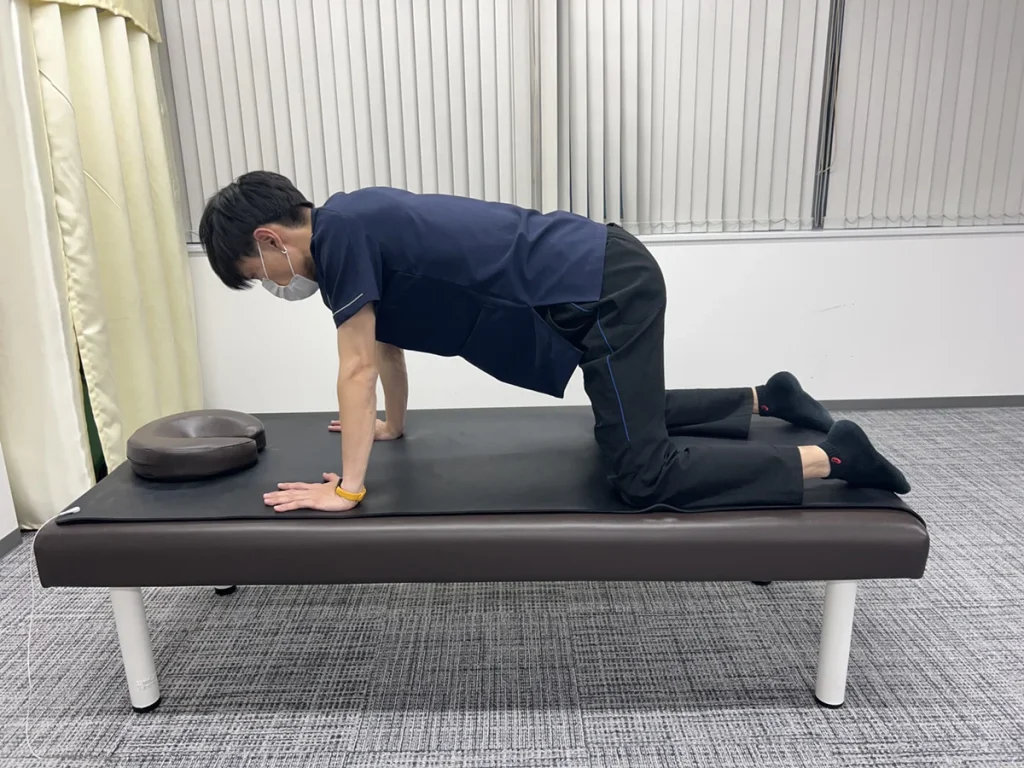
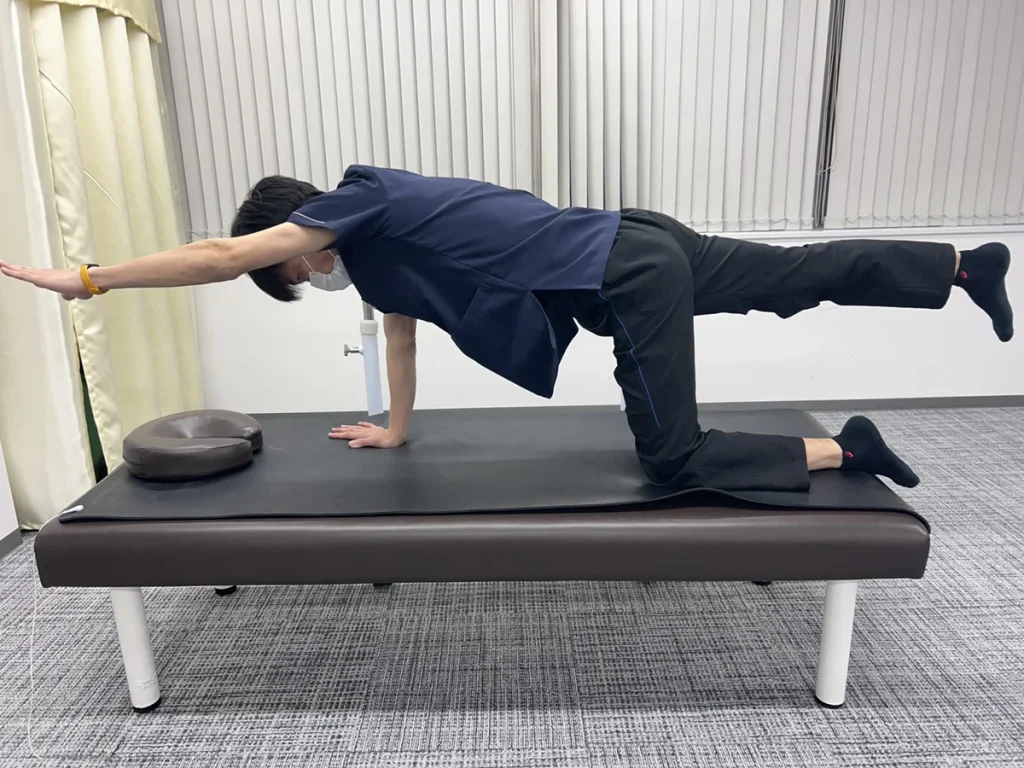
Things to watch out for when stretching and muscle training
It is important to perform exercises such as stretching in the correct way.
When performing rehabilitation, keep the following points in mind.
・Do not force yourself when you are in pain
・Do not perform in the wrong posture (if you have spinal canal stenosis, arching your lower back is especially bad)
・Continue for at least 1 month
Treatment at our clinic
Stretching can relieve the pain, but the damage to the intervertebral discs that causes spinal stenosis does not heal, so the symptoms may return.
It is necessary to treat the damage to the intervertebral disc that is causing the pain.
Recent research has shown that intervertebral disc degeneration is a contributing factor to spondylolisthesis. *1
Therefore, we believe that slippage cannot be prevented unless the degenerated intervertebral disc is repaired. At our hospital, we perform the Cellgel method for spondylolisthesis caused by degeneration of intervertebral discs.
*1 Reference source: I. Akkawi, H. Zmerly. Degenerative spondylolisthesis: A Narrative Review . Acta Biomedica, vol. 92, No.6, 2021.
With our hospital’s Cell-Gel method, we inject a drug that fills the cracked part of the intervertebral disc, and it turns into a gel to repair the crack, making it possible to perform fundamental treatment. The disc volume does not decrease, and the drug remains in the disc as a gel-like implant after treatment, so the disc is preserved.
If you have been diagnosed with spinal canal stenosis and are concerned about it, please consider an examination at our clinic.



